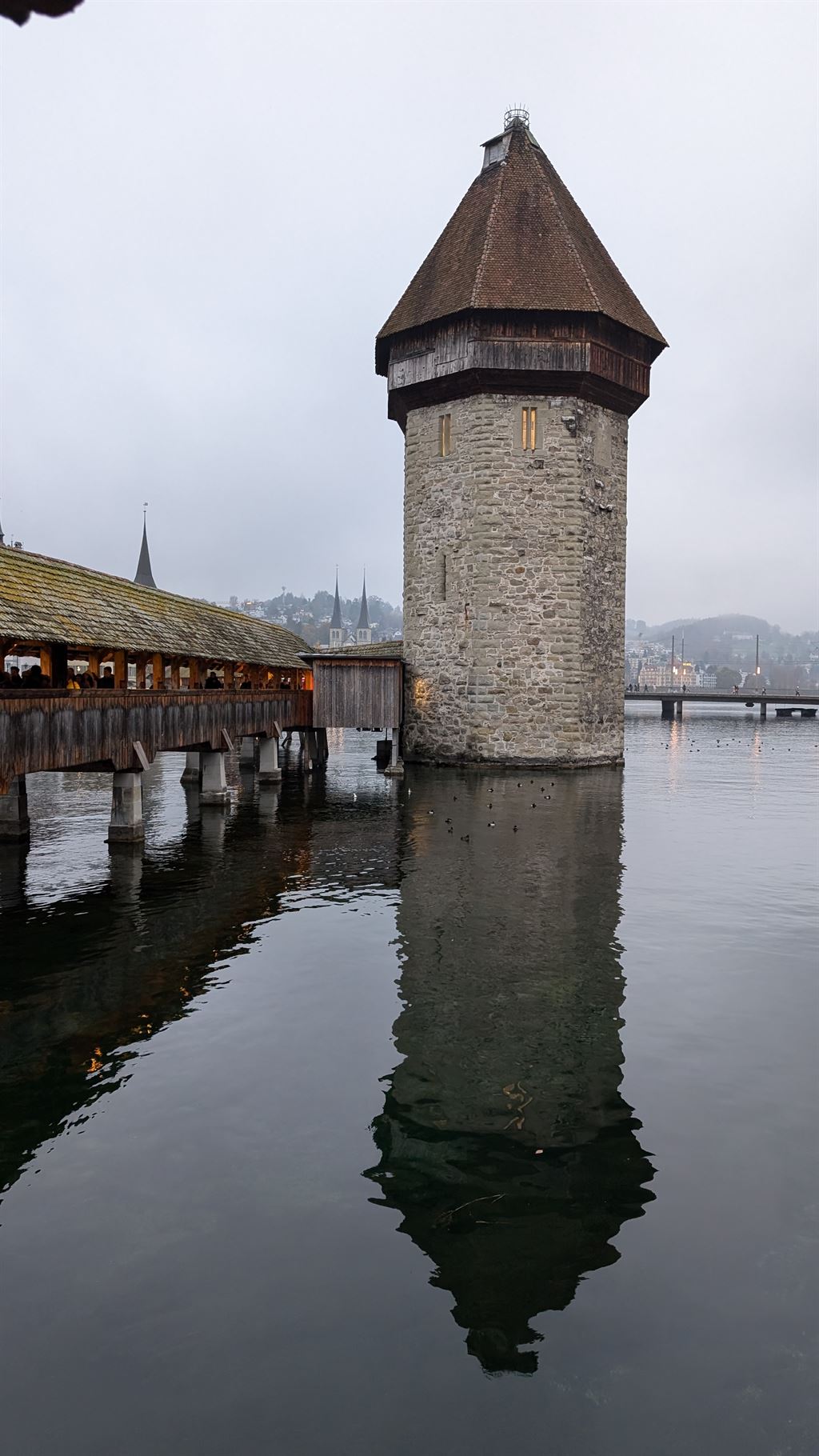There used to be three, but now there are only two - the Chapel Bridge and the Spreuer Bridge. This duo tells the story of Lucerne like an open history book, testifying to medieval craftsmanship and urban change. But where has the third bridge gone? The Hofbrücke, once the oldest of the three wooden bridges, now only exists in memory and on the pages of history books. It disappeared in the 19th century, gradually demolished, but its picture cycle was preserved and testifies to Lucerne's cultural heyday.
The remaining wooden bridges, with their characteristic triangular designs, make Lucerne unique in the world. No other city can boast such a rich heritage of covered wooden bridges. But the heart of this ensemble is and remains the Chapel Bridge.
background
The Chapel Bridge, Lucerne's most famous landmark, is much more than an architectural masterpiece. It is a living monument that tells of centuries of eventful history. Built around 1360, it connected the old town with the new town and was part of the city fortifications. With an original length of 279 meters, it was once one of the longest covered wooden bridges in Europe. Today, after renovations, it measures 205 meters.
But the darkest chapter in its history began in August 1993, when a devastating fire destroyed almost the entire bridge. Only the end pieces and the iconic water tower remained intact. The fire devoured 95 of the 158 historic triangular images, some of which were Lucerne's most important works of art. With impressive commitment, the bridge was restored within a few months and today shines in all its glory again - a symbol of the unbroken will to preserve tradition.
The Chapel Bridge houses a collection of 62 historical paintings depicting scenes from Swiss history and the lives of the saints. Each triangular painting is a window into the past, a narrative work of art that captivates travelers and locals alike. The painting cycle was once the most extensive of its kind in the world, and even with the losses from the fire, it remains unique.
The name of the bridge is derived from the nearby St. Peter's Chapel, which stands on the right bank of the Reuss. The water tower, which once served as a prison, treasury and archive, perfectly complements the ensemble. Together they form the ultimate postcard motif, attracting millions of visitors every year.
With around 13,800 visitors per day (as of 2017), the Chapel Bridge is a vibrant meeting place. This is where the past and present, locals and tourists, art and architecture meet. It represents the soul of Lucerne - a city that is proud of its history and yet keeps up with the times.
Anyone who strolls across the Chapel Bridge can sense the stories inscribed in its wood and its paintings. And perhaps, if you listen very carefully, you can also hear the whisper of the old Court Bridge, which was once part of this unique trio.
Access
The bridge is freely accessible.




